More about the Peacock Farm neighborhood
Architectural guidelines linked here.
More about Walter Pierce — and our interview with him — tagged here.
Original layout of Peacock Farm:
From the history section of our web site, Modernmass.com:
One of three important planned modernist developments, “Peacock Farm” was just a stone’s throw across Pleasant Street from the swimming pool of Six Moon Hill. This community was founded not by an architect associated with Harvard, as TAC was, but by Walter Pierce, from Harvard’s Cambridge rival, MIT. As Laurie Atwater began her article in Lexington’s Colonial Times newspaper,
The cover of the Sunday edition of the New York Times for September 13, 1959 announced: Russians Fire Rocket to the Moon, Expected to Hit Target Today….
Inside the pages, a story from “Lexington, Massachusetts: Colony of Contemporary Homes Will Be Repeated Near Boston.”
Pierce started his own architecture firm with Danforth Compton after studying at MIT with (among others) Carl Koch, a former student of Walter Gropius and a founding father of modern prefab housing in America. Koch was the founder of Techbuilt and Acorn Homes (a continuation of “kit” houses like the House by Mail Craftsman homes from Sears and Roebuck in the early-1900s). Compton and Pierce noticed a “for sale” sign near Route 2, Peacock Farm Road, a turn off of Watertown Street in Lexington. There was a 45-acre farm filled with wetlands, ledge, and woods. The two architects set out to become the developers of the site, with a plan they referred to as the “Program.” The concept was to build modern, aesthetically progressive homes that would be from a stock design yet looked as if they were custom built for the land.
After initially designing one-floor houses and building a handful of them, Compton suddenly and unexpectedly passed away and Pierce went on to design what is now known as the Peacock Farm House, a modern split-level home that, as Atwater notes in her article, “allowed the home to be ‘of the hill,” as Frank Lloyd Wright” espoused. The shape of this house style was flexible enough that it could adapt to flat or sloping lots. With some subtle variations, the typical Peacock Farm House had an entrance in the center of the broad side of the structure, a few steps up to a second floor consisting of three bedrooms and a bath or a bath and a half. There was the main floor with a kitchen, dining area and living room with a fireplace and exposed brick chimney. The structure was a basic post-and-beam system with few if any interior load-bearing walls, allowing for great flexibility in the floor plans, and many large windows unobstructed by sashes, mullions, or any unnecessary architectural features. A few steps to a lower level set in various depths of the grading of the site and sometimes a second lower level basement, depending on how much of a slope was present.
The Compton-Pierce team challenged the traditional notion of a house needing to be facing more or less square to the street. Free from this principle, they oriented the homes to be complimentary to the sites, taking advantage of the views and offering the sites the appearance of more space in between the houses. This was also counter to the trends of most modern developments, which seemed to operate from a scorched earth policy, clearing the land and plopping down cookie-cutter houses one after another and then possibly going back to plant saplings after the fact.
Many of these homes have been renovated and expanded over the years, much like those on Moon Hill and Five Fields. They seem very adaptable to such modifications. And most homeowners in these communities have adhered to the mild covenants that the original developers put into place to keep the communities aesthetically consistent. Note that I did not write, “homogeneous.” Modern, that is to say “present day” builders and developers should take note that a mish-mash neighborhood of new neo-colonial-Georgian-Victorians gussied up with various frills and flourishes is a less effective way of distinguishing a group of new houses from each other than the simple approach demonstrated by these forward-looking architects of the mid-century, using one or two plans and adapting them to the contours of the existing land with as little disturbance as possible to the existing conditions of the environment. Though these houses were not, as originally built, the most energy efficient by today’s standards, due to outdated heating systems, relatively little insulation, and large single-paned windows, they are easily retrofitted with updates for all of those components. They were, however, “green” from the get-go in their approach to land use, both in the conserving of the existing flora, with few having traditional lawns even today, minimizing impermeable surfaces (gravel driveways, e.g.), and reasonable lot sizes with larger amounts of common land for all to enjoy.
Which brings us to the socio-political philosophy that underlies these communities’ origins. Not only were these houses extraordinarily “new” in their styles, standing in stark contrast to the traditional New England vernacular via a contemporary European artistic aesthetic, but the founders of these developments also brought an egalitarian approach with attention to developing a community ideal that contrasted the largely politically and socially conservative post-war suburbs. One of the first large suburban development, Levittown, New York, was about conforming to the new neat and largely homogeneous suburban idea of the American Dream, trimmed lawns hemmed in by squared fences. These Lexington modernist developments tended to encourage responsibility and cooperation in the neighborhood as a whole, with partnerships in the non-profit corporations formed to watch over the common areas and the upholding of the benign covenants.
The layout of the communities allowed for a natural sort of privacy yet a community spirit was fostered and has continued to flourish in all of them. Peacock Farm celebrated its 60th anniversary in 2012. (See more about this and other modernist communities at www.Modernmass.com)
*From Edson H. Beall, Historian with the National Register of Historic Places
• A property will not be listed if, for individual properties, the owner objects, or for districts, a majority of property owners object.
• National Register listing does not automatically invoke local historic district zoning or local landmark designation.
• Federal Regulation 36 CFR 60 authorizes the National Register of Historic Places.
• Contact your State Historic Preservation Office (SHPO) for any specific state rules or regulations





